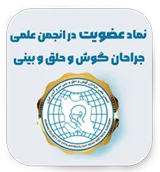The bony nose structure is like a pyramid. Bony noses have thinner skin than fleshy noses, and they are more flexible than fleshy noses. So it is easier for a surgeon to reform a bony nose and the final results of bony nose surgery would be better. A good surgeon can solve a bony nose problem with nose surgery . Sideling, humpy and roman noses are in group of bony nose. The surgeon focus in nose job is on the nasal bridge. The type and flexibility of skin have significant role in the surgery. Depending on your nose type, the surgeon can increase or decrease cartilage.
More information about the importance of skin type in nose surgery article
The degree of skin tension is an important factor that should consider in nose job, while fleshy noses don’t have much skin tension and consequently nose surgery has less effect on fleshy nose. So if you have fleshy nose and wants to do nose surgery, it is better to find an expert surgeon.

How we can correct the nasal bump?
The most common method to remove the nasal bump called Osteotome. Osteotome is a surgical pen like device for cutting bone that insert under the skin and gently cut the excess nasal bump. Once the nasal bump is reduced, all curve can refine by a medical grade file called rasp.

Wide bridge
On of the most noticeable problem of nose is the wide nasal bridge, especially on frontal view. This undesirable width usually can be correct by a technique called osteotomies. This method includes making controlled bone fractures that causes positioning inward and make a narrow nose.

How osteotomy is performed?
Osteotomy is done by a medical grade chisel called osteotomy, it makes controlled incisions in nasal bone in order to make sufficient mobility for bone repositioning.
Osteotomy is usually done after removing a nasal bump even if the nasal bump doesn’t appear wide before the surgery. It means the width nasal bone may appear too wide after removing the nasal bump. It also allows the surgeon to correct the resulting open roof deformity that is overly flat.

Deviated nose
One of the most difficult thing during the surgery is to straighten a crooked nose. Several factors involve this surgery and make it a challenging surgery.
The first factor is a certain memory of deviated bone and cartilage that address the bone to reserve to the pre-operative position.
The second factor is positioning the deviated nose in the asymmetric structure. It means difficulty to find a straight line to place the new nasal position.
How nose job can fix a crooked nose?
In many cases, nose surgery is not performed just to improve nose appearance and facial symmetry. A deviated nose not only impact the facial symmetry, but may cause many breathing problems.
In this condition you may ask, whether nose job is right for me or not?
For correcting the deviated nose, the following items should be considered:
- If you do the nose job for treating blocked nasal passage and restoring normal breathing function, it called septo-rhinoplasty.
- If you want to get nose job for correcting the above mentioned problems and also make your nose smaller, it would be a more difficult surgery.
- Nose job can perform for correcting a deviated nose from birth as well as deviation due to an occurred damage such as a broken nose that is not fixed.
- A deviated nose may result in growth disturbances that last in childhood and adolescent. Any trauma or damage to the nose during the life can causes deviation.
What is the success rate of surgery for deviated nose?
The success rate of surgery for deviated nose mostly depend on the real problems inside the nose. Some studies have shown that there is about 30 percent risk of reverse after the surgery of crooked nose. Although, it mostly depends on the techniques which are used in the surgery and surgeon’s proficiency and experience. Its better you consult with different surgeons. You should be suspect to the many promises and try to compare different surgeon comments.
General information about bony nose surgery
Bony nose surgery can be done under local or general anesthesia. There are different techniques to reduce the width of nasal bone. The most common method is cutting the lateral nasal bones and pushing them inside of the nose by the closed technique. You should use of a nasal splint at least 1-3 weeks after the surgery. Usually bruising and swelling may last one weeks after the surgery. The recovery time is varying from 1-2 weeks depending on the surgery specifics and results of surgery will determine around 1-3 months following the surgery.












